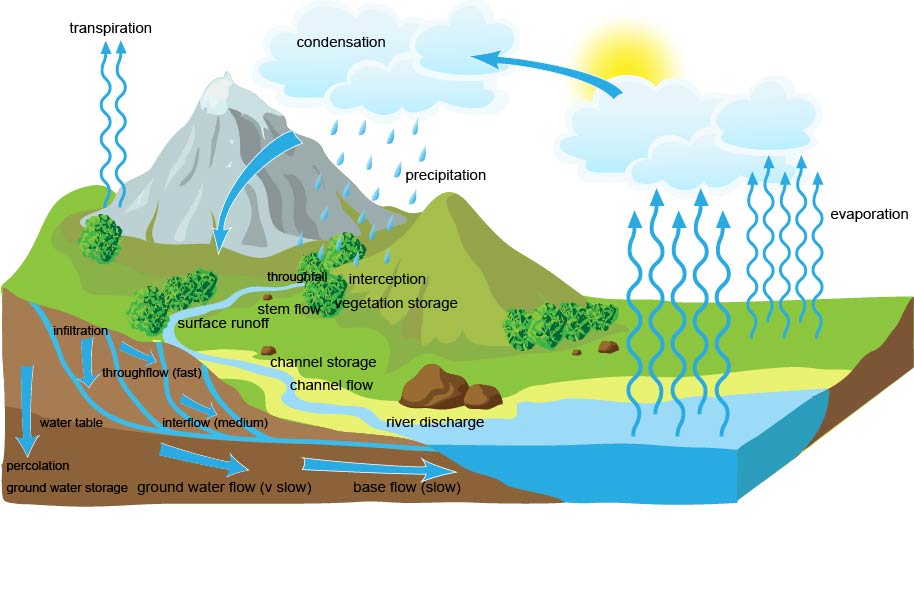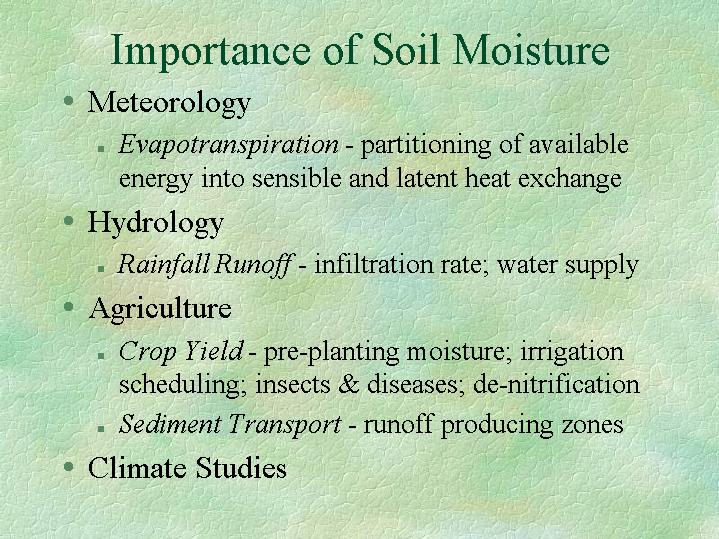

For this reason, "Follow the Water" was the science theme of NASA's Mars Exploration Program (MEP) in the first decade of the 21st century.

Understanding the extent and situation of water on Mars is vital to assess the planet's potential for harboring life and for providing usable resources for future human exploration. In 2018, scientists reported the discovery of a subglacial lake on Mars, 1.5 km (0.93 mi) below the southern polar ice cap, with a horizontal extent of about 20 km (12 mi), the first known stable body of liquid water on the planet, but subsequent work has questioned this detection. Large amounts of underground ice have been found on Mars the volume of water detected is equivalent to the volume of water in Lake Superior. Therefore, the best potential locations for discovering life on Mars may be in subsurface environments. The damaging effects of ionizing radiation on cellular structure is another one of the prime limiting factors on the survival of life on the surface. In addition, Mars lacks a thick atmosphere, ozone layer, and magnetic field, allowing solar and cosmic radiation to strike the surface unimpeded.

Gullies and slope lineae along cliffs and crater walls suggest that flowing water continues to shape the surface of Mars, although to a far lesser degree than in the ancient past.Īlthough the surface of Mars was periodically wet and could have been hospitable to microbial life billions of years ago, the current environment at the surface is dry and subfreezing, probably presenting an insurmountable obstacle for living organisms. Numerous geomorphic features suggest the presence of ground ice ( permafrost) and the movement of ice in glaciers, both in the recent past and present. Geologic evidence of past water includes enormous outflow channels carved by floods, ancient river valley networks, deltas, and lakebeds and the detection of rocks and minerals on the surface that could only have formed in liquid water. The present-day inventory of water on Mars can be estimated from spacecraft images, remote sensing techniques ( spectroscopic measurements, radar, etc.), and surface investigations from landers and rovers. Aeolis Palus in Gale Crater, explored by the Curiosity rover, is the geological remains of an ancient freshwater lake that could have been a hospitable environment for microbial life. Water has also apparently flowed across the surface for short periods at various intervals more recently in Mars' history. Before about 3.8 billion years ago, Mars may have had a denser atmosphere and higher surface temperatures, allowing vast amounts of liquid water on the surface, possibly including a large ocean that may have covered one-third of the planet. No large standing bodies of liquid water exist on the planet's surface, because the atmospheric pressure there averages just 610 pascals (0.088 psi), a figure slightly below the vapor pressure of water at its triple point under average Martian conditions, warming water ice on the Martian surface would sublime, meaning transition directly from solid to vapor conversely, cooling water would deposit, meaning transition directly from vapor to solid. Some liquid water may occur transiently on the Martian surface today, but limited to traces of dissolved moisture from the atmosphere and thin films, which are challenging environments for known life. Even more ice might be locked away in the deep subsurface. More than 5 million km 3 of ice have been detected at or near the surface of Mars, enough to cover the whole planet to a depth of 35 meters (115 ft). Abundant water ice is also present beneath the permanent carbon dioxide ice cap at the Martian south pole. Additionally, water ice is also visible at the surface at the north polar ice cap. In the mid-latitudes, it is exposed by impact craters, steep scarps and gullies. While most water ice is buried, it is exposed at the surface across several locations on Mars.

What was thought to be low-volume liquid brines in shallow Martian soil, also called recurrent slope lineae, may be grains of flowing sand and dust slipping downhill to make dark streaks. Scalloped terrain led to the discovery of a large amount of underground ice – enough water to fill Lake Superior (November 22, 2016) Īlmost all water on Mars today exists as ice, though it also exists in small quantities as vapor in the atmosphere.


 0 kommentar(er)
0 kommentar(er)
